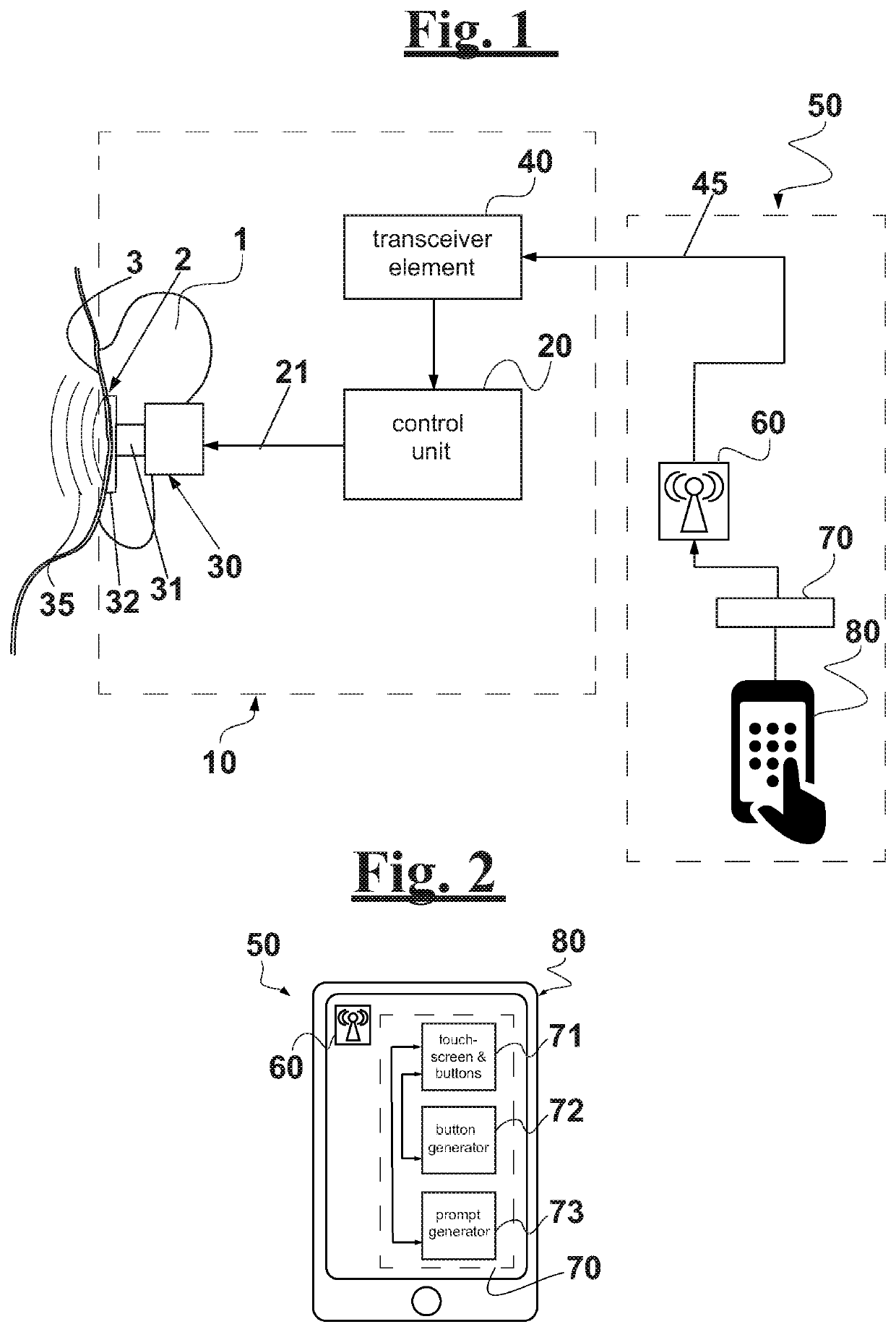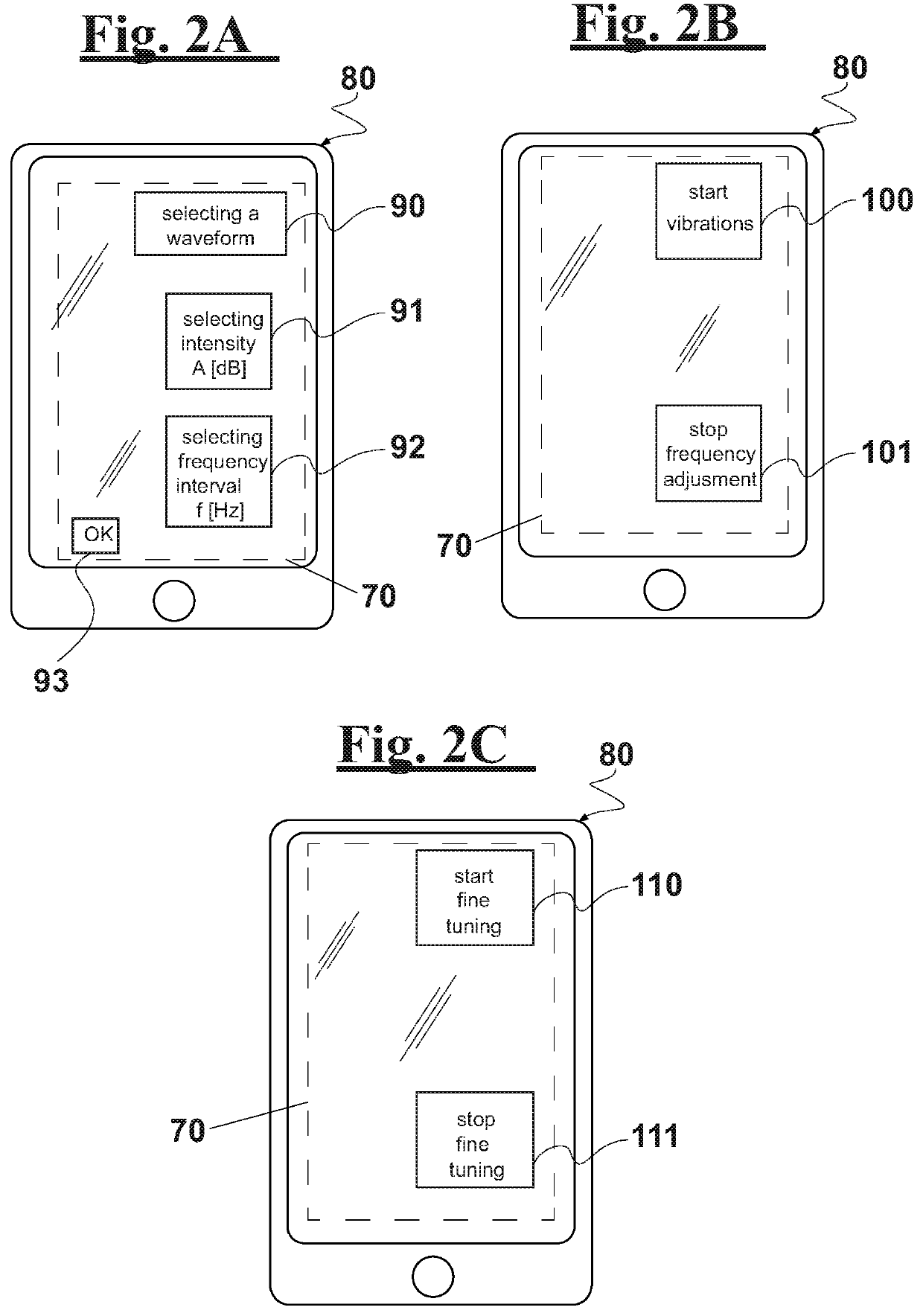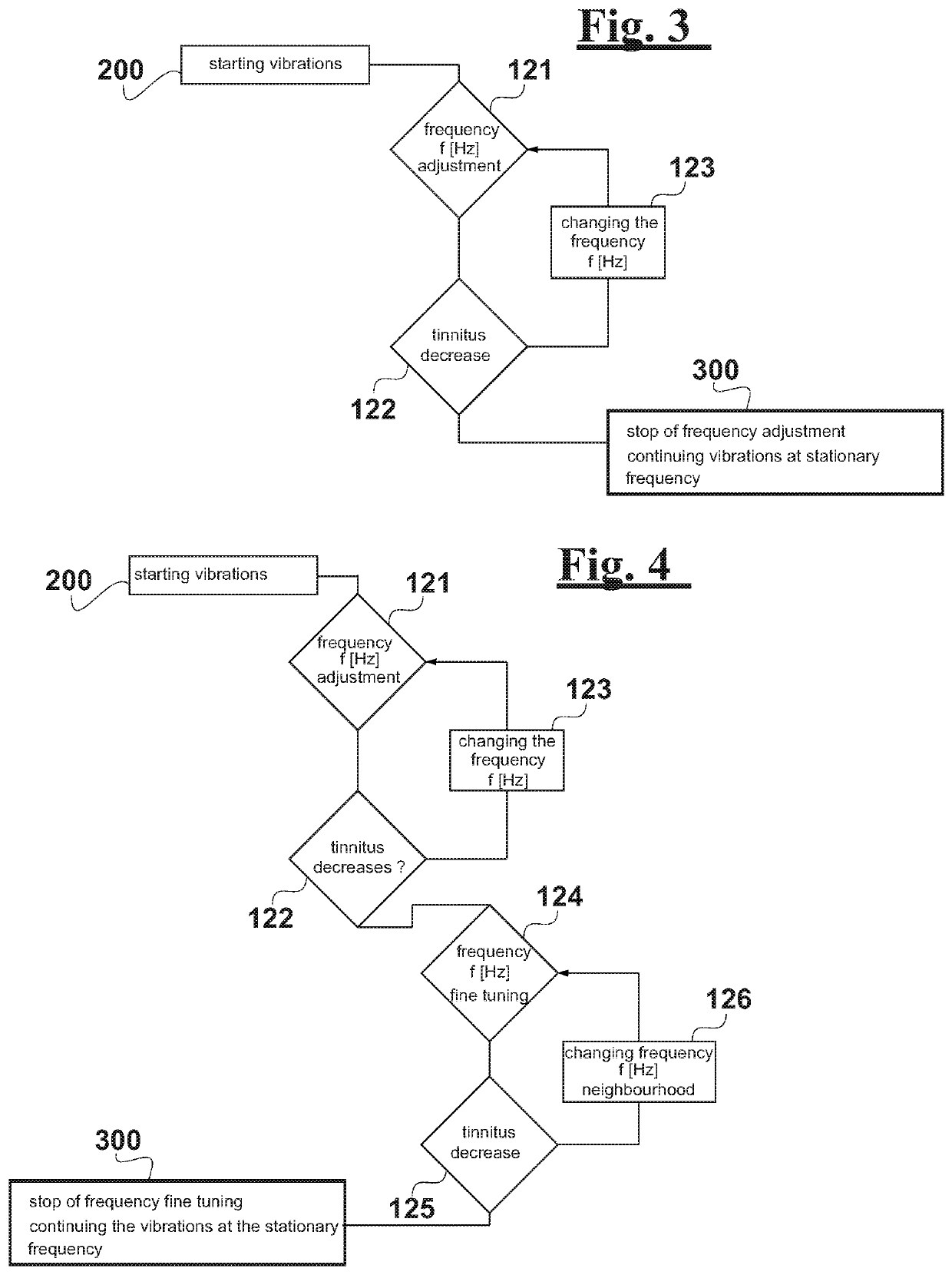Electromechanical stimulation system for treating tinnitus
- Summary
- Abstract
- Description
- Claims
- Application Information
AI Technical Summary
Benefits of technology
Problems solved by technology
Method used
Image
Examples
Embodiment Construction
[0087]FIG. 1 shows a possible exemplary embodiment of an electromechanical stimulation system for treating tinnitus. The system comprises a proximal unit 10, configured to be positioned near a user's ear 1, and an input interface 50 configured to be operated by the user, in order to communicate with proximal unit 10.
[0088]In the shown example, proximal unit 10 is located in a zone close to a mastoid process, but it can be located on both mastoid processes or on the user's forehead.
[0089]Proximal unit 10 comprises an electromechanical device 30, an application device 32 thereof, a control unit 20 and a transceiver element 40 configured to receive control signals 45 for control unit 20.
[0090]In particular, control unit 20 is a hardware component configured to generate an actuation signal 21 for electromechanical device 30, responsive to control signals 45 transmitted by transceiver element 40. The frequency f and the intensity A of actuation signal 21 can be modified, and the signal c...
PUM
 Login to View More
Login to View More Abstract
Description
Claims
Application Information
 Login to View More
Login to View More - R&D
- Intellectual Property
- Life Sciences
- Materials
- Tech Scout
- Unparalleled Data Quality
- Higher Quality Content
- 60% Fewer Hallucinations
Browse by: Latest US Patents, China's latest patents, Technical Efficacy Thesaurus, Application Domain, Technology Topic, Popular Technical Reports.
© 2025 PatSnap. All rights reserved.Legal|Privacy policy|Modern Slavery Act Transparency Statement|Sitemap|About US| Contact US: help@patsnap.com



